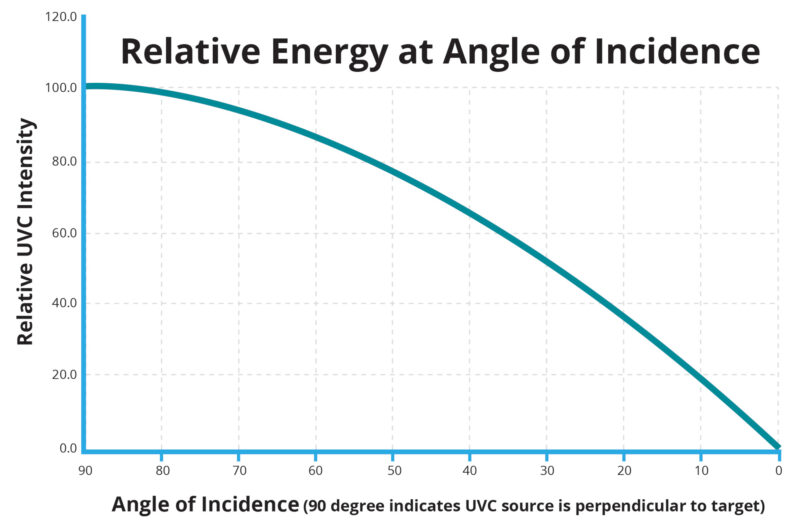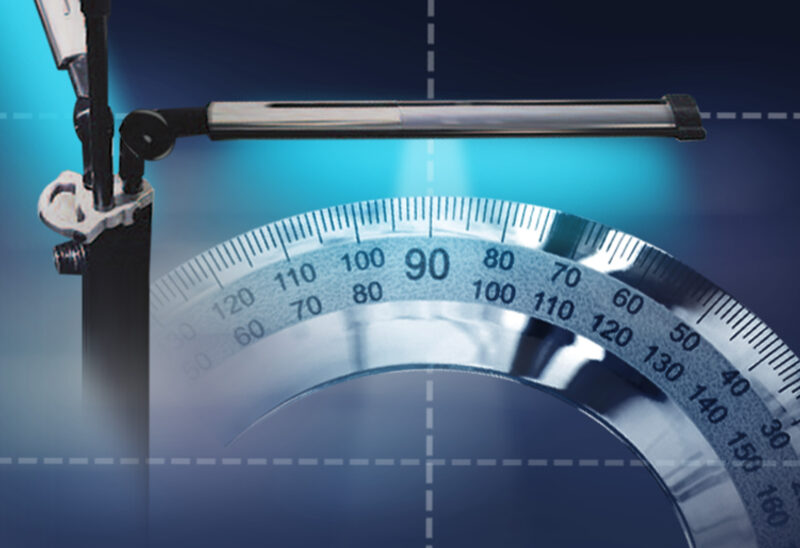

The next aspect to explore is the angle of incidence. Incidentally, this is required information in order for you to understand and evaluate UVC systems and why Moonbeam3 is, frankly, the best.
What is “angle of incidence” and why does it matter? To explain it best, we’ll use a baseball analogy: You are at bat, standing ready, and the pitcher throws the ball. You swing the bat and the baseball just skims the top of the bat, tangentially to the top of the bat, perhaps just pulling out a splinter of wood as it whizzes past – Strike One! Your swinging bat didn’t put much energy into the ball. On the second pitch, however, you swing and hit the ball directly, straight on, right in the middle and the ball sails off into the bleachers!
And so it is with electromagnetic waves and the power they impart when they tangentially skim a surface or, alternatively, when they slam straight into it. With energy, though, we do not have to guess how much energy it will impart, it is a known quantity and is called “incident energy”. And again, thankfully, we can estimate it with a simple equation. Incident energy is equal to the energy hitting the surface multiplied by the cosine of the incident angle, IE=Ed*(cos Theta).
See the angle of incidence chart above.
The horizontal axis defines the angle of impact and the vertical axis defines how much of the energy is delivered to what it hits at that angle. 90 degrees is straight-on, full impact, and 0 degrees is a tangential, skimming, missed impact. Note that the slope starts off in a fairly linear fashion. This is beneficial for Tower UVC systems as they need all the help they can get in this realm. Before delving into that, though, which we will do below, the chart is important to understand because it reveals the critical aspect of what happens at even slight reductions in the impacting angle of energy.
Back to our baseball example, imagine the pitcher throws a really quick fastball and you, the batter, see the baseball coming, and swing as fast as possible. Not able to respond quickly enough to the approaching fastball, your bat contacts the ball 45 degrees off center. Your bat is still going to impart energy to the ball, but the power has been reduced by one-third – that is a big reduction! Well, so too for UVC energy – “Glancing” off the surface dramatically reduces the energy transferred to the object.
So, key point two: “Apply the dose straight.”

